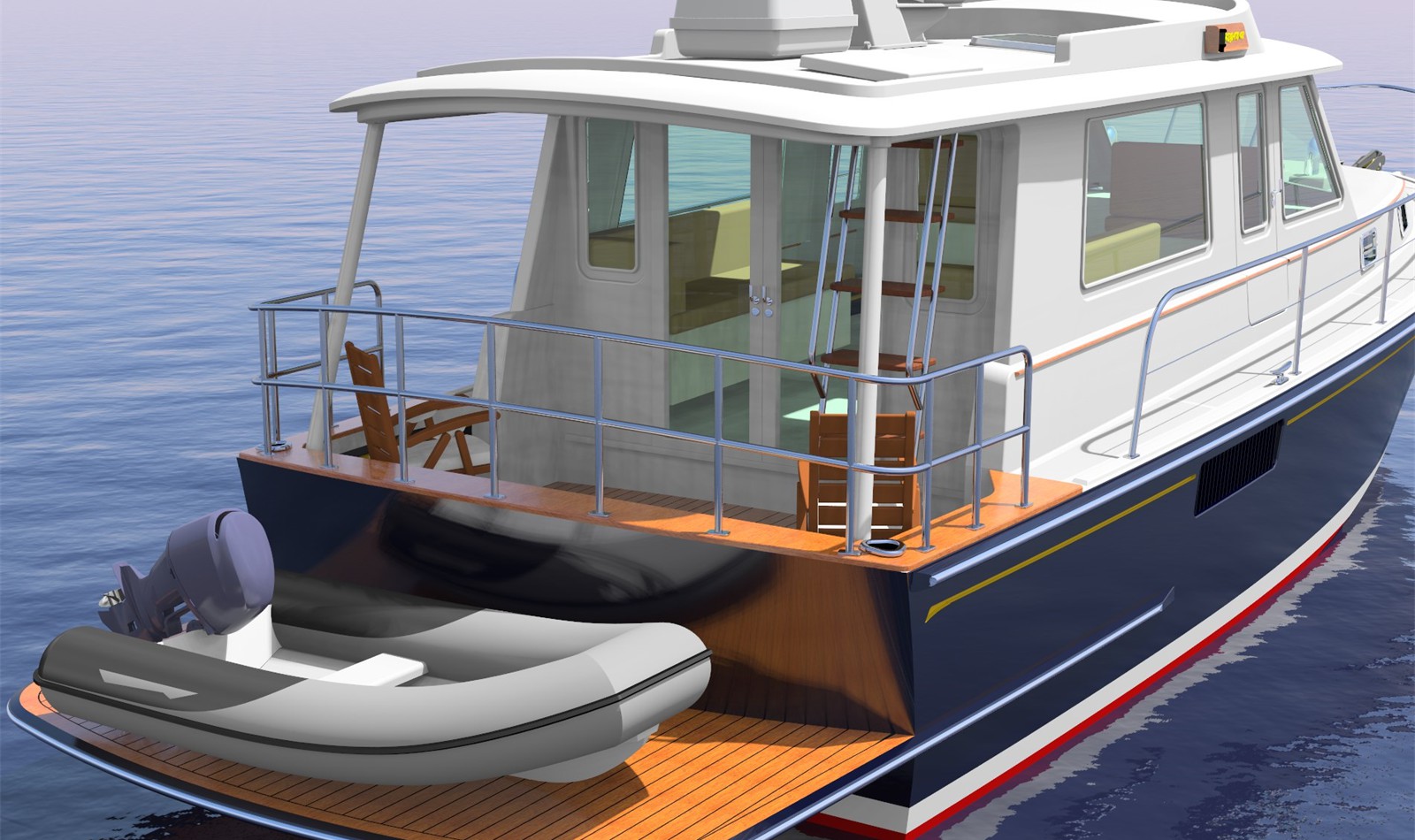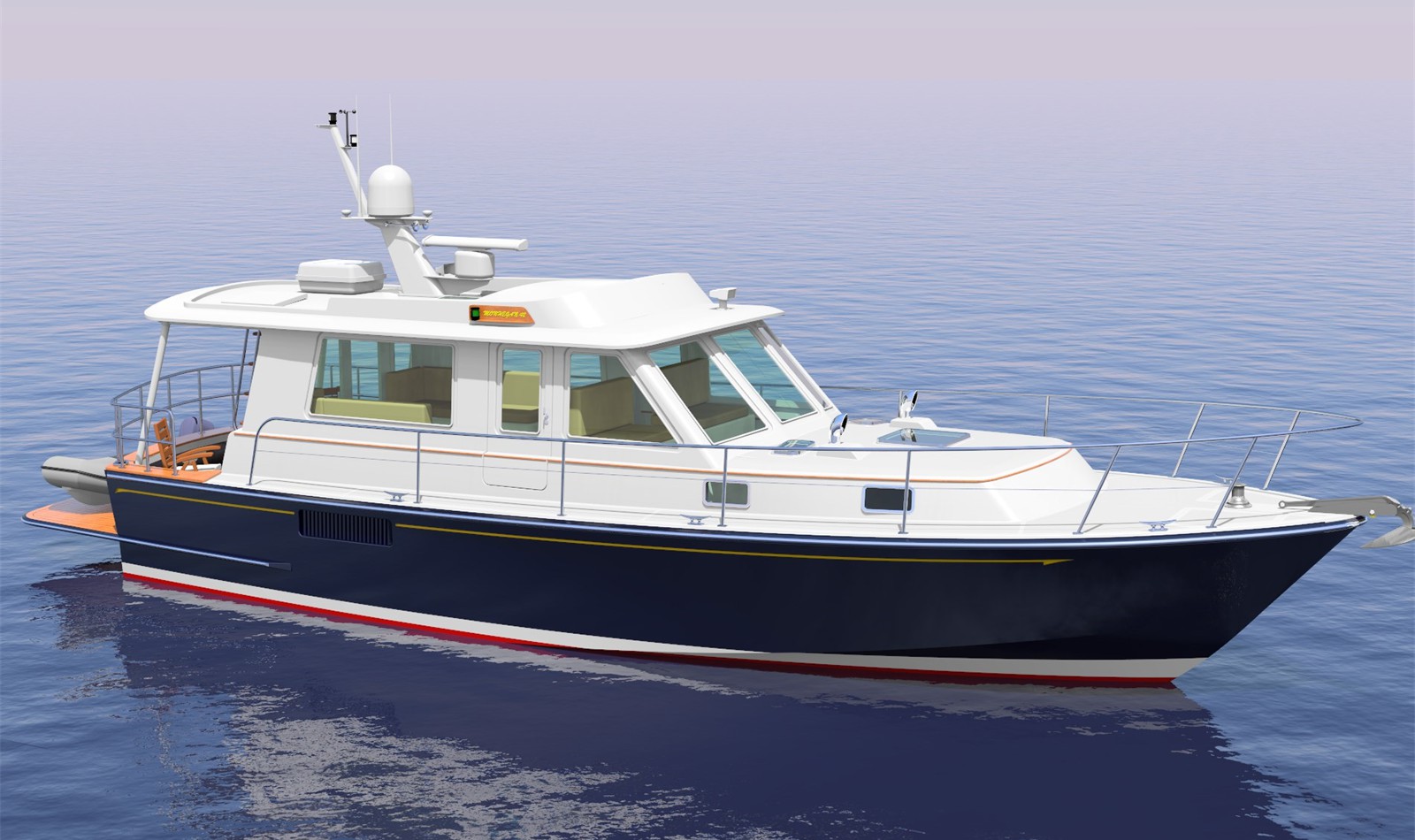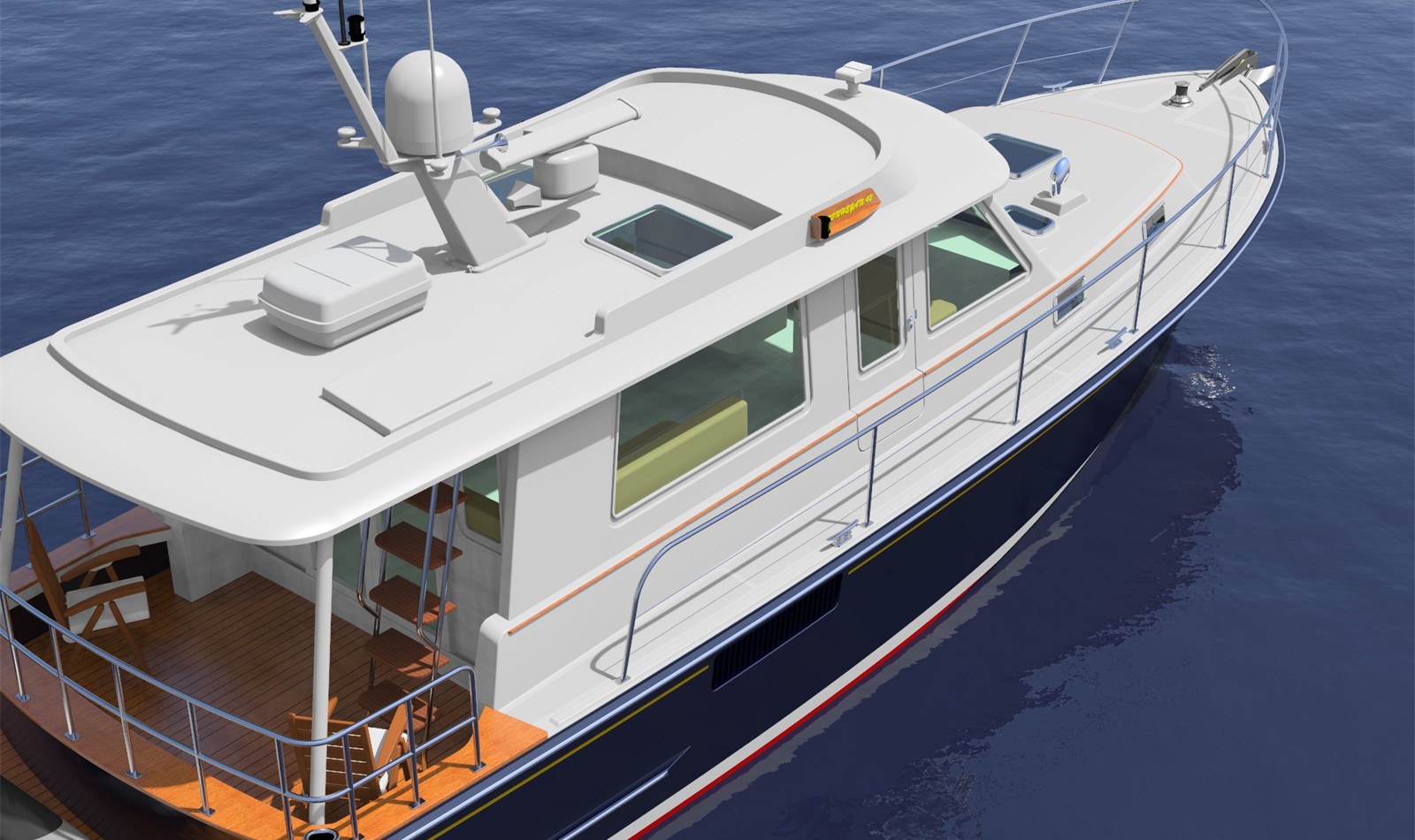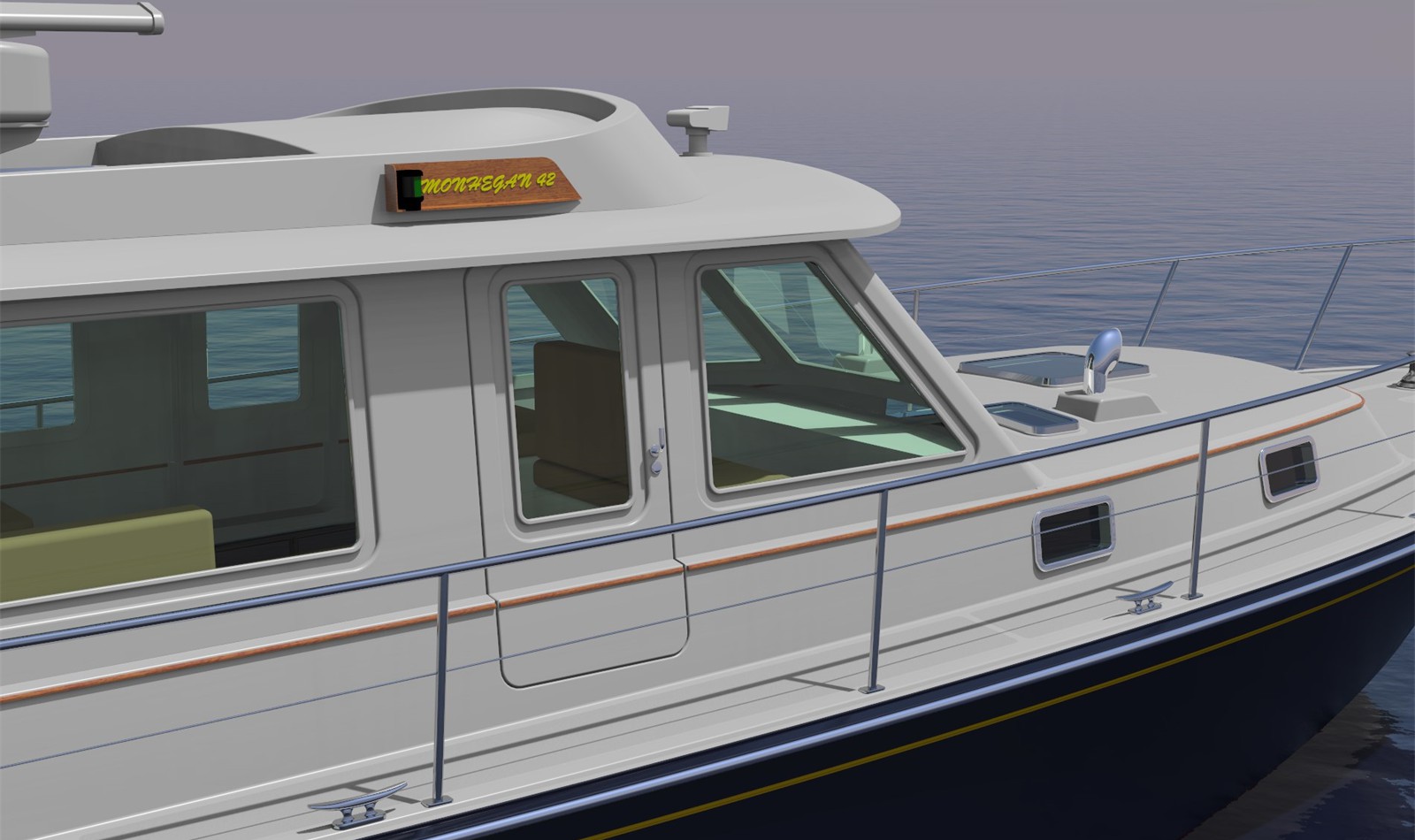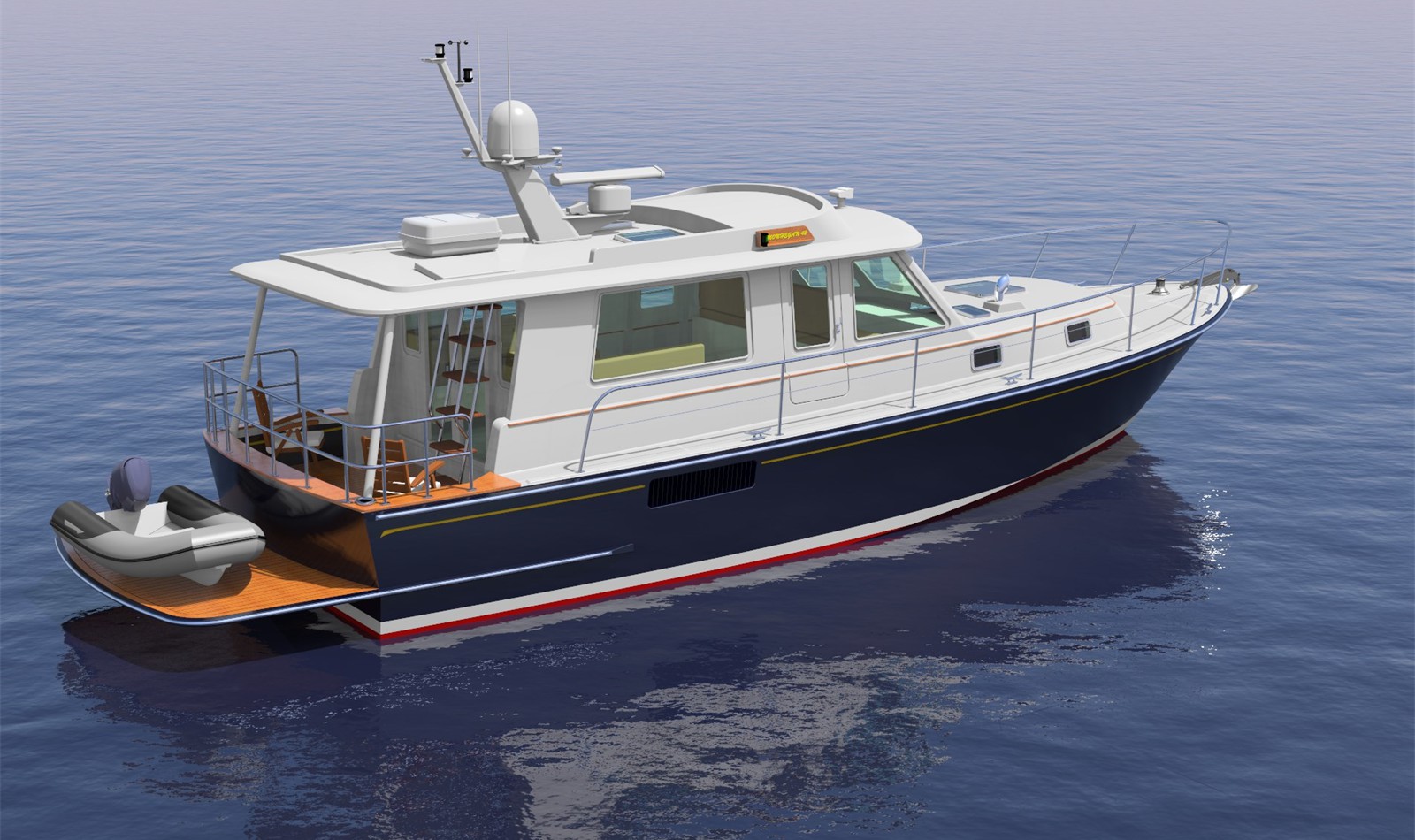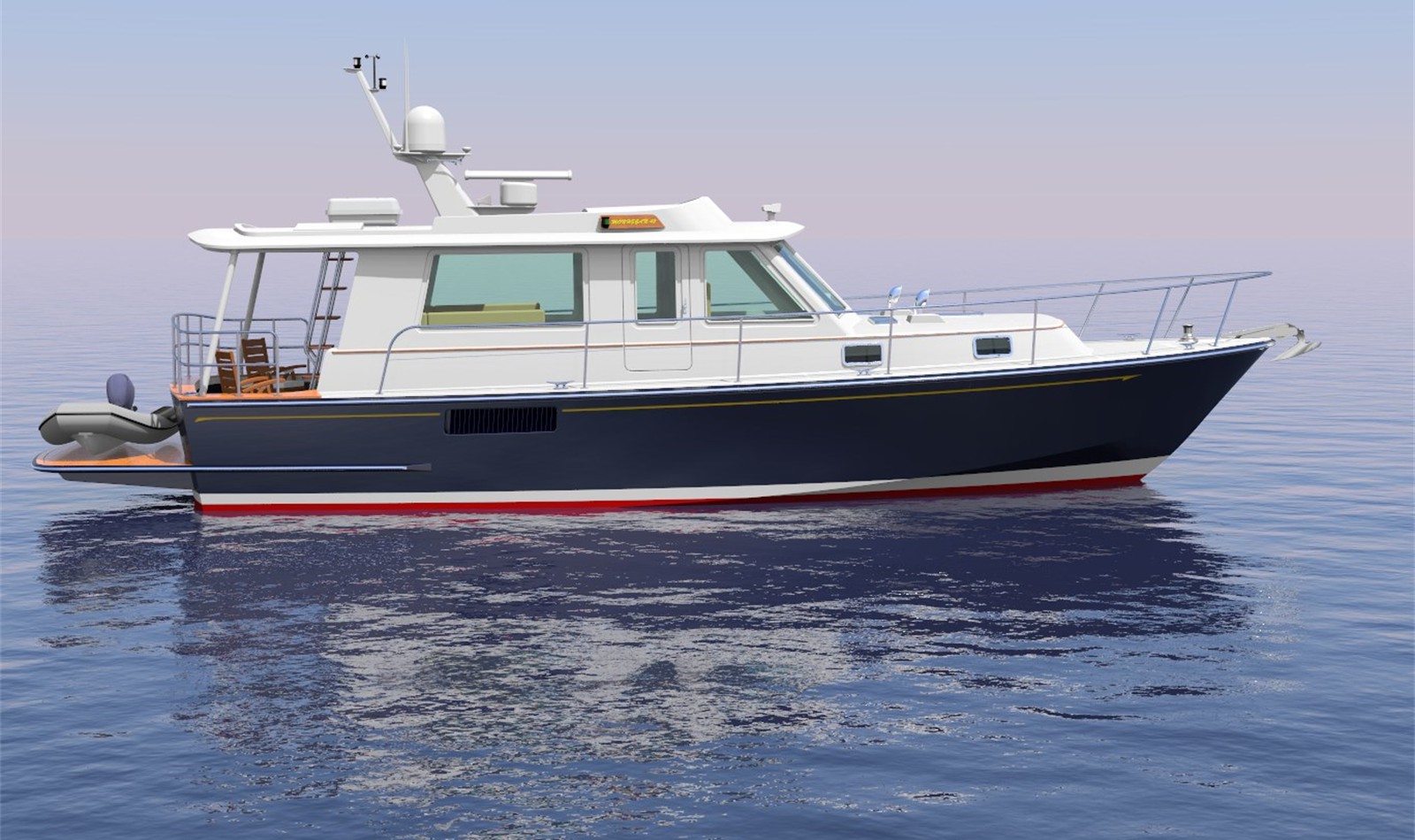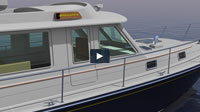42' Semi-Custom Extended Hardtop Cruiser
Beam: 13'-0"
Draft: 2'-5"
Displacement (half load): 25,000 lbs.
Power: Cummins QSB6.7, 425 hp @ 3,000 rpm
Speed: 16 kts Cruise / 20 kts Max
Fuel Capacity: 300 USG
Water Capacity: 300 USG
Construction: Infused FRP composite
Profile & Arrangement
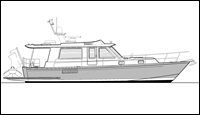
Video
The Ray Hunt Design / Lyman-Morse team has been working together for years to produce a range of traditionally-styled, modern-performance boats. Depicted here is a 42-foot Extended Hardtop Cruiser, which is one of four configurations, also including a Flybridge, Cruiser, and Open, all derived from the same tooling, which allows quick and economical building.
The extended hardtop cruiser is in some ways the most interesting. Intended for a couple planning long periods aboard, she has a large salon/pilothouse with double sliding doors aft, so interior and exterior spaces run together, with the afterdeck at the same level as the salon, and fully covered for sun and rain protection. Generous side decks are accessible either from the afterdeck or from port and starboard sliding side doors. A half-level down is a galley to port, open to the salon/pilothouse, and to starboard is a head with separate shower. Right forward is the owners’ stateroom with a centerline queen-sized berth and plenty of storage. A storage space under the helm is reached through a sole hatch and/or a swing-up companionway.
With her generously-sized spaces and one-and-a-half level layout packaged in a seaworthy, economical, and modestly speedy hull, this should be an attractive substitute for a seaside cottage or retirement home.
While most applications of the Hunt V-hull use twin engines to take advantage of the comfortable Hunt high speed ride, there are other possibilities for modest speed and good fuel economy which are sometimes neglected. This 42-foot cruiser has a single 300hp engine driving a propeller partially housed in a tunnel. Full planing speed will be about eighteen knots, and fuel consumption a touch more than one nautical mile per gallon. At maximum displacement speed, eight knots, she will return some 2 nmpg. The use of a single engine not only halves the weight of the propulsion package, but it reduces the weight of fuel to be carried, and lighter weight means greater efficiency, earlier planing, and a less pronounced “hump angle” when in a semi-planing mode. Other benefits result from the use of a propeller tunnel; reduced draft, lower and more efficient shaft angle, and quieter operation. The V hull with chine flats and lift strips runs straighter and drier than a round-bilged hull, and is less inclined to roll, both under way and at rest. Running at semi-planing speeds, the hard chine hull has the advantage of crisper water separation and reduced resistance. Best efficiency at semi-planing speed is achieved with the use of interceptor-type trim tabs. There is a widespread misconception that use of a trim tab means that the hull has been poorly designed. This is not always the case, and thoughtful use of trim tabs will make the boat run more efficiently and comfortably. For instance, running against a head sea, the bow is trimmed down to present the high-deadrise forebody to the oncoming waves. Running downwind the bow is trimmed up to maximize reserve buoyancy and avoid bow-steering. At semi-planing speed, the interceptors are used to dial out running angle and maximize bottom area.

